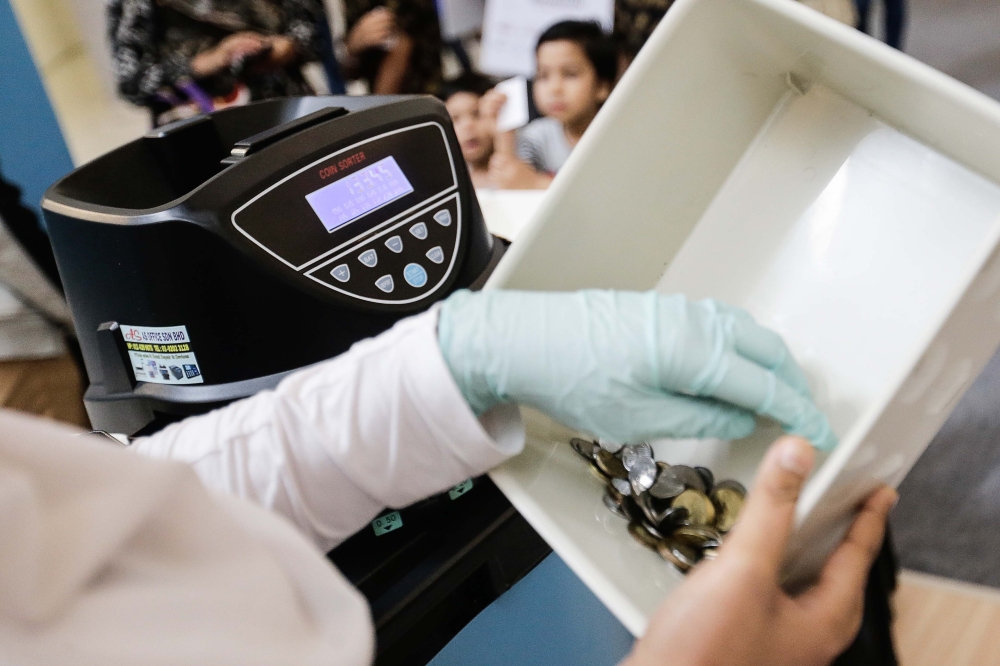KUALA LUMPUR, Jan 13 — Did you know the loose change you have lying around idly is part of 4.6 billion pieces of coins Bank Negara Malaysia (BNM) issued into circulation for the past five years?
To put this into perspective, that is equivalent to an average of 920 million pieces annually or 28 pieces for each of Malaysia’s 32.4 million total population.
Malay Mail recently asked BNM about this, and the central bank said coins are introduced into circulation annually to ensure an uninterrupted supply even though a significant number of coins do not get recirculated or deposited with financial institutions.
As the central bank responsible for the entire currency-issuing value chain, BNM’s 2020 Annual Report estimates that as much as 30 per cent of coins or 240 million pieces issued annually end up being kept idle at home in jars and drawers as “dead coins”.
Advertisement
Nevertheless, BNM acknowledged the challenge remains to get the public to recirculate more coins kept at home out of personal inconvenience.
“A continuous circulation of coins is not only important to support economic activities but to limit environmental impacts from the resources and energy required to produce new coins.
“We strongly encourage members of the public to use and recirculate any idle coins that are saved in jars and drawers,” BNM replied to Malay Mail, after it was asked on the importance of recirculating idle coins.
Advertisement
Disclosed in BNM’s 2020 and 2021 Annual Reports, BNM collected and recirculated 82.1 million coins or 9.1 per cent of their minting facility’s annual output in 2020; whereas 60.4 million pieces of coins or 7.6 per cent of total coins issued in 2021 were recirculated, representing a considerable cost saving to its currency operations.
This would mean over 90 per cent of coins issued in 2020 and 2021 are not recirculated back!

As the central bank responsible for the entire currency-issuing value chain, BNM’s 2020 Annual Report estimates that as much as 30 per cent of coins or 240 million pieces issued annually end up being kept idle at home in jars and drawers as ‘dead coins’. — Picture by Sayuti Zainudin
So how can I do my part?
In Malaysia, circulation coins are issued in the denominations of five sen, 10 sen, 20 sen and 50 sen with their unique technical specifications by BNM as the sole authority to issue currency in Malaysia.
Each coin is also produced with different alloys; nickel brass clad copper (50 sen), nickel brass (20 sen) and stainless steel (10 sen and five sen).
In BNM’s response to Malay Mail’s queries, coins are returned to BNM upon reaching the end of their lifespan, which could take approximately 25 years, or once regarded as unfit as per Section 14 of the Currency Act.
For circulation coins, unfit pieces are disposed of at the prevailing market price by selling them as scrap metal to an authorised company, BNM added.
As stipulated under the aforementioned Act, BNM is given the legal mandate to withdraw currency notes which are defaced or unfit for circulation, currency coins which are worn or tampered with, and currency notes or currency coins which have ceased to be legal tender (demonetised).
According to BNM’s Guideline on Quality Standards for Malaysian Currency, defined criteria for coins unfit for recirculation include mutilated features such as corroded, hole, dented, broken, cut, burnt, stained and freak coin (minting anomalies).
To complement BNM’s coin recirculation agenda, the central bank has since collaborated with the banking sector on the deployment of coin deposit machines nationwide as early as 2014.
“These coin exchange facilities offered by some banking institutions provide an avenue for members of the public to conveniently exchange their coins, which are later recirculated.
“[The public] can do so through various channels including coin deposit machines, over-the-counter transactions, or make use of coin conversion programmes by private firms,” BNM said.
For more information on coin exchange facilities, read here.
